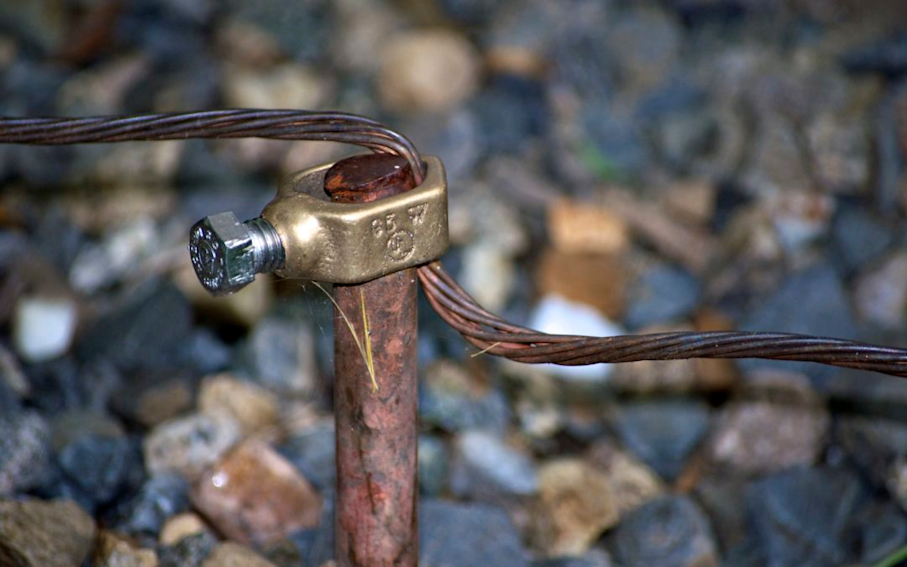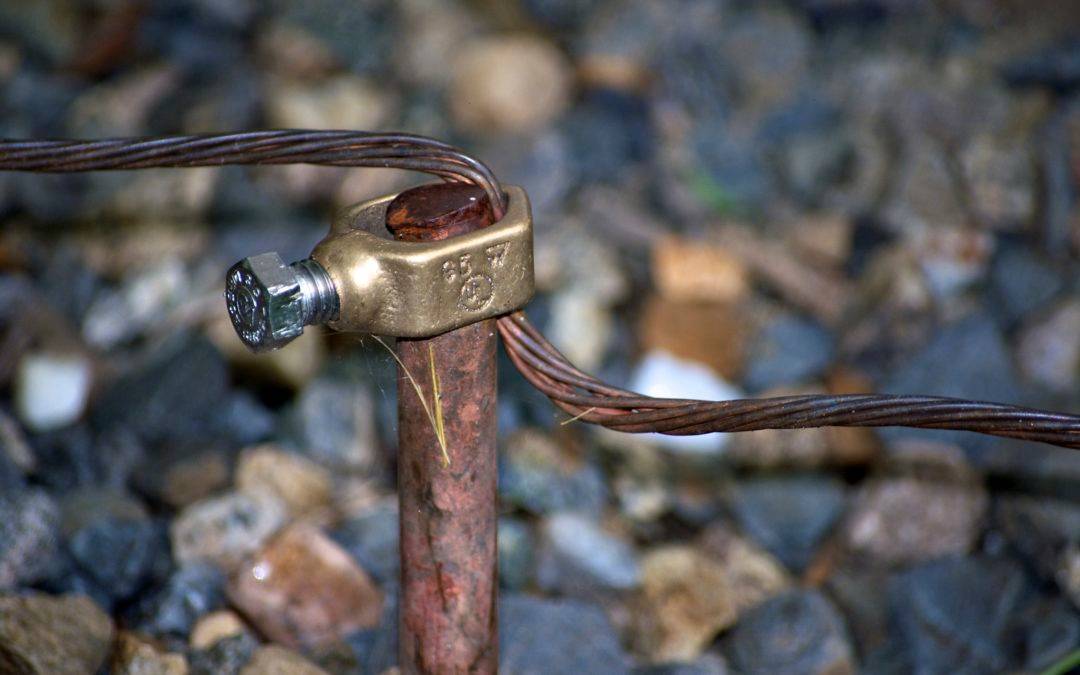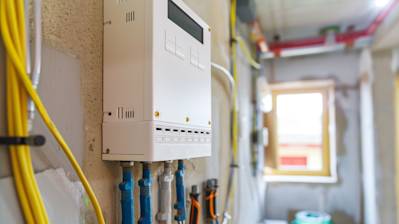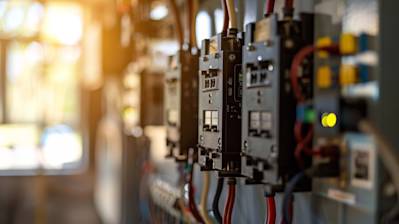Ground rods, also known as earth rods, play a critical part in a home's electrical system. Providing safety and ensuring electrical stability, these rods make for an essential installation in both commercial and residential settings. This comprehensive guide will immerse you in the hidden world of ground rods.
An Overview of Ground Rods
A ground rod is an essential component in an electrical grounding system. It is a long metal rod, driven into the ground to establish an electrical connection with the Earth. Ground rods are usually made from copper or galvanized steel and vary in length but are most commonly found in 8-foot lengths.
Why Are Ground Rods Needed?
Just like every journey needs a roadmap, every electrical system requires a safety route to direct the undesirable electrical currents. The ground rod provides this safe pathway for stray electrical current from lightning or electrical faults that could potentially harm the electrical system.
Exploring the Mechanism of Ground Rods
Let's dive deeper to understand the mechanism behind the ground rod system.
Fault Current: Ground rods provide a path for the fault current, allowing it to flow into the earth, thereby protecting any individuals near the fault from electric shock.
Voltage Stabilization: Ground rods play an important role in steadying voltages during normal operation. They create a reference point for the voltage present, ensuring a stabilized environment for the electrical systems at work.
Types of Ground Rods
Different structures might need different types of ground rods. Here are some widely used types:
Copper-Bonded Steel Ground Rods: As the name suggests, these rods are made by bonding an 18 mil thickness of copper to the steel core. Being economical and easy to install, they are one of the most popular choices.
Galvanized Steel Ground Rods: These rods cater to those looking for affordable options. The galvanized coating enhances durability and longevity.
Stainless Steel Ground Rods: These are specifically designed for highly corrosive environments and are resistant to chloride ion corrosiveness. Hence, these are used in coastal areas.
How to Install a Ground Rod
Installation of a ground rod might require professional assistance due to the safety norms and technical expertise required. However, it is still beneficial to know the basic steps:
Locate Your Electrical Panel: To avoid excessive wiring, choose a spot close to your electrical panel.
Prepare for Digging: Some local authorities may need to survey your area before you start digging to avoid damaging any other utility cables.
Installing the Rod: The rod needs to be driven into the ground until only 6 inches remain above the surface.
Clamping the Copper Wire: The copper grounding wire must be securely clamped to the ground rod.
Connecting the Wire: This grounding wire needs to be connected to your home's electrical panel.
Test the Installation: It is essential to test the system for any faults after the installation.
Safety Precautions for Ground Rod Installation
While installing a ground rod is not an excessively complicated process, it does involve working with electricity. Therefore, some basic safety precautions are indispensable.
- Always wear safety gloves and rubber-soled shoes while working.
- Ensure to survey the area before digging.
- It is crucial to power off all electrical systems during the process.
Ground Rod Maintenance
Maintenance of your ground rod is equally important. Ensuring that the system is intact and the wire connections are not loose or damaged are a part of this routine.
Frequently Asked Questions about Ground Rod
What is the Importance of the Ground Rod Length?
The length of the ground rod is vital because it determines how effectively the rod can disperse electrical energy into the ground. It's generally suggested that ground rods should be at least 8 feet long to ensure efficient, reliable grounding in most soil conditions.
What Materials are Commonly Used in Ground Rods?
Ground rods are generally made from copper or galvanized steel. Copper rods are highly resistant to corrosion and are generally more effective in conducting electrical power, making them the preferred choice in many installations. However, galvanized steel is also used because it is less expensive and fairly resistant to corrosion.
How is a Ground Rod Installed?
In a typical installation, the ground rod is driven into the ground with a tool known as a ground rod driver. The rod must remain vertically upright and should be buried deep enough so that just a few inches are left protruding above the surface.
What is Ground Rod Resistance to Ground?
Resistance to ground is a measure of how effectively a grounding system can dissipate electric charges into the earth. The lower the ground resistance, the more efficiently a ground rod can perform its job. Factors affecting ground rod resistance include the rod material, diameter, length, and soil composition, as well as the moisture content of the soil.
What is a Ground Rod Clamp?
A ground rod clamp is a connector used to attach grounding wire to the ground rod. They ensure that the electrical connection between the wire and the rod remains secure, enabling the safe flow of current into the ground.
Are Ground Rods Necessary in All Electrical Installations?
While most electrical systems, particularly in buildings, require grounding for safety purposes, there are some exceptions. Some low-risk electrical equipment may not require grounding. However, for larger electrical systems, especially those in commercial or industrial settings, ground rods play a significant role in ensuring safety.
How Many Ground Rods are Required for Good Grounding?
The National Electric Code (NEC) generally recommends that at least two ground rods, spaced at least 6 feet apart, be used for each electrical service. However, the number of ground rods needed can vary depending on the size of the electrical system and the soil conditions where the ground rods are installed.
How often Should a Ground Rod be Checked or Replaced?
On average, you should check the condition of your ground rod every 2-3 years. However, the frequency of checks might increase based on environmental conditions and the quality of installation. A ground rod should usually last for decades, but if there are noticeable signs of corrosion or other damage, it should be replaced.
Pros of Ground Rods
Safety
One of the primary advantages of using ground rods is the safety they provide. Ground rods are a crucial part of electrical systems because they can discharge dangerous electrical fault currents into the ground so they don't harm humans or damage electrical appliances. This is incredibly useful in terms of preventing electrical shocks, as well as minimizing the potential for explosions or fires that can arise from electricity-related issues.
Protection of Electrical Systems
Protection Against Voltage Spikes
Ground rods are especially adept at preventing spikes or surges in voltage. These voltage increases can happen due to lightning strikes or sudden changes in your system, like when large appliances switch on or off. Such voltage spikes can damage appliances or, in more severe cases, even melt wires and cause a fire. By providing a pathway for the excess electrical current to travel into the ground, ground rods prevent this from happening.
Reduction of Electromagnetic Interference
Another advantage of ground rods is that they can help reduce electromagnetic interference. By ensuring the excess current has a path to follow into the ground, ground rods can prevent stray currents from creating electromagnetic fields that negatively interfere with other electrical devices in use.
Flexible Installation
Ground rods come with a level of flexibility in where they can be installed. They don't need any substantial amount of space in the immediate vicinity of your property, and they can be easily installed vertically or at an angle if the ground conditions necessitate it.
Cons of Ground Rods
Grounding Effectiveness Dependence on Soil Conditions
One of the main downsides of a ground rod is that its effectiveness can significantly depend on soil conditions. For a ground rod to work effectively, it needs to be installed in soil with good electrical conductivity. However, different soils have differing levels of resistance; for instance, rocky or sandy soils may offer a higher resistance than moist or clay soils.
Improper Installation Risks
Electrical Hazards
Improper grounding or incorrect installation of the grounding system can cause numerous electrical hazards and potentially fatal accidents. This could involve a high level of risk if grounding rods are not installed or maintained by professionals.
Ground Rod Corrosion
Another drawback of ground rods is that they can sometimes corrode over time, particularly if they are installed in soils that are either highly acidic or alkaline. A corroded grounding rod can reduce the effectiveness of the grounding system, leaving electrical systems vulnerable to surges or other issues.
Requires Periodic Inspection and Maintenance
Ground rods require regular inspection and maintenance to ensure they continue to provide efficient grounding. The system should be inspected occasionally to look for any damage or corrosion that might have occurred over time to prevent any electrical malfunctions or safety hazards.
Can Be Inefficient in Certain Areas
Occasionally, grounding can be inefficient in some geographical locations. Places with dry and rocky soils often do not conduct electricity as well, making the grounding less effective. In such cases, additional grounding strategies may be needed, which could add to the complexity and cost of the grounding system.
Energy Waste
Although ground rods direct unwanted electrical energy into the ground, this is essentially a waste of electricity. The energy could potentially be reused or redirected, but with conventional grounding rods, it is merely disposed of in the ground, contributing to overall energy wastage.
Summary
Ground rods are essential in a variety of settings, from construction sites to residential homes. They play a crucial role in ensuring the safety of electrical systems. When electricity isn't grounded properly, it can cause fires or electric shocks, hence a ground rod is necessary to facilitate the flow of electrical energy safely into the earth.
We can't stress enough how important a ground rod is. Consider it to be your protection against electrical faults, power surges, and lightning strikes. It's a silent guardian that safeguards you and your electrical devices from potential harm. If you haven't got your electrical system grounded using a ground rod, it's high time you should.
The benefits and features of a ground rod are numerous, including its ability to provide a direct pathway for electrical currents to follow in the event of a fault. The installation process also doesn't involve too many complications. In short, a ground rod is your key to ensuring safer and more secure electrical systems, so don't underestimate its value.
About Sagan Electric
Sagan Electric hails from the heart of Sacramento, CA. This dynamic company has been electrifying the community since its conception, with expertise that run across a wide range of electrical services. From managing small home repairs to spearheading large-scale commercial projects, our team of professional electricians ensures that everyone — be it locals or businesses — is powered-up and ready to go. We built our business on a foundation of trust, quality workmanship, and customer satisfaction. At Sagan Electric, we firmly believe that your electrical needs and safety always come first. That’s how we light up lives in Sacramento, one circuit at a time.
Tags: electric, grounding, safety,








